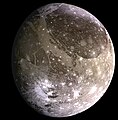Файл:The Galilean satellites (the four largest moons of Jupiter).tif

Памер гэтага JPG-прагляду для TIF-файлу: 800 × 262 піксэлаў. Іншыя разрозьненьні: 320 × 105 піксэлаў | 640 × 210 піксэлаў.
Арыгінальны файл (1830 × 600 піксэляў, памер файла: 1,51 Мб, тып MIME: image/tiff)
Гісторыя файла
Націсьніце на дату/час, каб паглядзець, як тады выглядаў файл.
| Дата і час | Мініятура | Памеры | Удзельнік | Камэнтар | |
|---|---|---|---|---|---|
| цяперашняя | 15:54, 29 сьнежня 2011 | 1830 × 600 (1,51 Мб) | Prof. Professorson | {{Information |Description=This composite includes the four largest moons of en:Jupiter which are known as the Galilean satellites. The Galilean satellites were first seen by the Italian astronomer en:Galileo Galilei in |
Выкарыстаньне файла
Наступная старонка выкарыстоўвае гэты файл:
Глябальнае выкарыстаньне файла
Гэты файл выкарыстоўваецца ў наступных вікі:
- Выкарыстаньне ў af.wikipedia.org
- Выкарыстаньне ў als.wikipedia.org
- Выкарыстаньне ў ar.wikipedia.org
- Выкарыстаньне ў ast.wikipedia.org
- Выкарыстаньне ў az.wikipedia.org
- Выкарыстаньне ў ba.wikibooks.org
- Выкарыстаньне ў be.wikipedia.org
- Выкарыстаньне ў bg.wikipedia.org
- Выкарыстаньне ў bn.wikipedia.org
- Выкарыстаньне ў bn.wikibooks.org
- Выкарыстаньне ў bs.wikibooks.org
- Выкарыстаньне ў ca.wikipedia.org
- Выкарыстаньне ў cs.wikipedia.org
- Выкарыстаньне ў en.wikipedia.org
- Выкарыстаньне ў en.wikibooks.org
- Выкарыстаньне ў es.wikipedia.org
- Выкарыстаньне ў et.wikipedia.org
- Выкарыстаньне ў eu.wikipedia.org
- Выкарыстаньне ў fi.wikipedia.org
- Выкарыстаньне ў fr.wikipedia.org
- Выкарыстаньне ў gl.wikipedia.org
- Выкарыстаньне ў he.wikipedia.org
- Выкарыстаньне ў hi.wikipedia.org
- Выкарыстаньне ў hu.wikipedia.org
- Выкарыстаньне ў hy.wikipedia.org
- Выкарыстаньне ў id.wikipedia.org
- Выкарыстаньне ў it.wikipedia.org
- Выкарыстаньне ў ja.wikipedia.org
- Выкарыстаньне ў kk.wikipedia.org
- Выкарыстаньне ў ko.wikipedia.org
Паказаць глябальнае выкарыстаньне гэтага файла.




